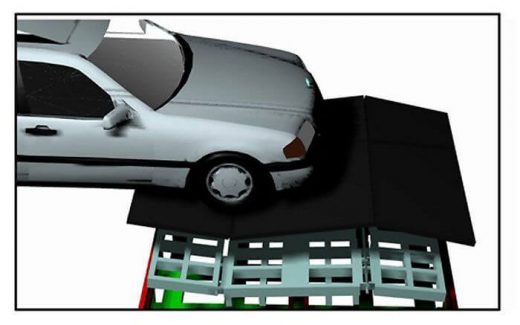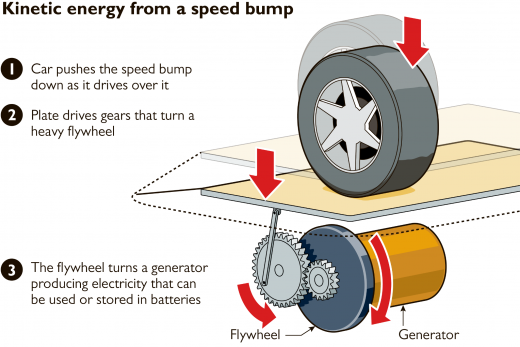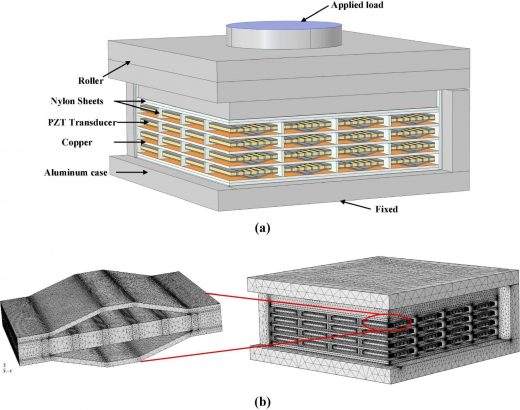Introduction
Nowadays, all the energy resources are depleting due to our constant dependency on natural resources. At this stage, an urgency has emerged to harness the energy that can operate almost anything in the world. Likewise, in the civil engineering world, new inventions are emerging to make a greener world.
In the transportation sector, kinetic roads can help tackle pollution and our extensive dependency on natural resources. Solar radiation and kinetic energy from passing automobiles are two forms of energy sources frequently applied to road surfaces. As a result, they offer a lot of potential as long-term energy sources. Roadway pavement occupies a large portion of urban and rural areas, covering millions of square kilometers and constantly being exposed to various energy sources such as sun radiation, vibration, and traffic-induced pressures.
With these in mind, to collect energy from the pavement, two main technological groups are now being used: (a) those based on heat or sun radiation, and (b) those based on converting kinetic energy from moving traffic to electric energy. Both of these sources have demonstrated their ability to provide energy to transportation infrastructure. Piezoelectric-based modules, photovoltaic pavements (solar panels embedded in the pavement), thermoelectric systems, electromagnetic systems, and asphalt solar collectors are among the technologies included in these two areas.

Fig 1: Kinetic energy generated by moving vehicle
Courtesy: Treehugger
Some of these technologies have been evaluated, and various prototypes based on piezoelectric and thermoelectric technologies are developed by investigators involved in this study. Earlier studies have shown that piezoelectric energy harvesting systems are reliable energy resources for low-power roads, including sensor and LED lighting research. Several prototypes have been developed in order to increase the power output, reduce floor deflections and ensure prototype durability by modifying the prototype geometry and piezoelectric configuration.
One design created by the Israeli company Innowattech consists of a thin box encircling the piezoelectric material placed beneath a layer of asphalt. As a result, as vehicles drive over plates embedded in the asphalt, a hydraulic fluid tank beneath the road is compressed, generating a series of pumping movements that turn a generator to generate electricity. The vertical force compresses the piezoelectric material when a vehicle drives across the box and produces electricity.
Engineers are now poised to harvest some of the excess kinetic energy of the world’s moving vehicles using this technology, with various designs being proposed. Engineers have developed a new style of road that can convert vehicle vibration into power. While the concept isn’t new, the implementation is unique.
Advantages
Some of the advantages of these kinetic roads are –
- These roads are pollution-free and can generate an endless amount of energy and power.
- These roads are of low cost and have low maintenance. Initially, the construction of these roads may cost a considerable amount of money, but it will prove economical in the long run.
- No manual work is required during the process as the roads are pre-cast with these kinetic materials. The construction of these roads is similar to Interlocking concrete block pavements.
- No fuel is consumed in transportation as constant monitoring is avoided. Also, unlike flexible pavements, these roads don’t require stoning, dusting, macadam works, etc., and hence are laborless works.
- These roads, if wear out after some time, can easily be replaced within a few minutes. Hence, these do not block the traffic for a long time. Therefore, time is saved.
- These roads are energy-efficient throughout the year. The generation of energy by these roads is massive and beneficial for other types of work too.
Mechanism
The asphalt solar collector technology mechanism involves heat exchange between the pavement and the fluid in an embedded pipe inside the paving, followed by the storage and use of energy in asphalt solar collectors for heating and cooling purposes. Thermal gradients are used to generate electricity using a thermoelectric generator between layers of pavement (TEG). Solar panels on road surfaces to generate electricity are installed in photovoltaic paving.

Fig 2: Kinetic energy generated from a speed bump
Courtesy: The Times
Dr. Hao Wang (Rutgers, Civil, and Environmental Engineering) explains this mechanism using piezoelectric transducers in the pavement as a sustainable source of energy. Traffic-driven mechanical energy, in particular heavy cars, can in many ways generate electricity. A piezoelectric material or an electromagnetic generator can be used to produce relative movement to capture mechanical stress related to traffic. Photovoltaic cells, heat flux, or thermoelectric material can also be used to harvest some of the solar energy absorbed by pavement. Even geothermal energy can be gathered with a heat pump and subsurface thermal energy storage by following this mechanism. Hence, it’s effective in unimaginable ways.
For the energy-efficient devices to be installed on the roads, the fundamental principle is the movement of internal mechanical components due to the cinematic energy generated by the vehicle’s weight. These include pinion rack systems, camarm systems, chain and rocket systems, hydraulic power systems, reel and chain systems, and relative mobility of two parts of permanent magnet generators, as well as stator and translators. The compressing air (through a vehicle’s passage) and the pressure-induced to generate electric power are other unconventional approaches that also can be adopted in the future.

Fig 3: Energy harvester module
Courtesy: Rutgers CAIT
Another approach is Piezoelectricity. Piezoelectricity refers to the ability of some materials, most notably crystals and some ceramics, including bone, to generate an electric potential in response to applied pressure. It has applications in sound production and detection, high tension generation, electronic frequency generation, and day-to-day applications such as cigarette lights and push-start propane grills. Piezoelectricity generates electricity under fast-moving traffic pressure by burying metal crystal pads hundreds of meters beneath the road.
Conclusion
In this way, many other techniques can be applied to utilize and harness the energy around us. Engineers need to think of innovative ideas to save the earth as well as to generate ideas that are robust, sturdy, and economical. Global energy demand has risen significantly due to the world’s growing population and the growing need to meet human needs through sustainable means. Efforts are being made to modify the system, even though the problems are insurmountable. Private companies compete in this sector, but governments in developed countries have recently noticed the developments in converting traffic rush into electricity and are funding many projects. Hence, we need more innovative ideas to save our planet.
References
• Science India, “Generating Electricity from Traffic”- http://scienceindia.in/home/view_article/88
• Rutgers, “Generating power every time you hit the road”- https://cait.rutgers.edu/generating-power-every-time-you-hit-the-road/
• Indiegogo, “Kinetic Roadways – Moving Energy Forward”- https://www.indiegogo.com/projects/kinetic-roadways-moving-energy-forward#
• Phys.org, “Developing roads that can generate power from passing traffic”- https://phys.org/news/2017-09-roads-power-traffic.html
• Slideshare, “Road power generation”- https://www.slideshare.net/NAZEEMARAFIQ/road-power-generation-69564346
• Mohammadreza Gholikhania, Reza Nasouria, Seyed Amid Tahamia, Sarah Legetteb, Samer Dessoukya, Arturo Montoyaa. Harvesting kinetic energy from roadway pavement through an electromagnetic speed bump. Applied Energy 250 (2019) 503–511, Elsevier.
If you have a query, you can ask a question here.



Greetings sir/madam I wish have more details on the above article and use it for a final year civil engineering project.
It’s a wonderful innovation in the domain is civil engineering